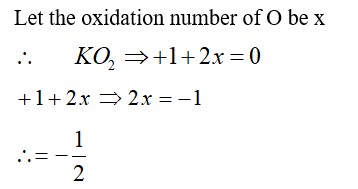11.26. (a) Classify following oxides as neutral, acidic, basic or amphoteric:
CO, B2O3, SiO2, CO2, Al2O3, PbO2, Tl2O3
(b) Write suitable equations to show their nature.
11.26. (a) Classify following oxides as neutral, acidic, basic or amphoteric:
CO, B2O3, SiO2, CO2, Al2O3, PbO2, Tl2O3
(b) Write suitable equations to show their nature.
-
1 Answer
-
(a) Neutral — CO
Acidic — B2O3, SiO2, CO2Basic — Tl2O3
Amphoteric — Al2O3, PbO2
(b)-CO does not react with acid as well as base at room temperature.
Being acidic B2O3, SiO2 and CO2 react with alkalis to form salts.B2O3 + 2NaOH à 2NaBO2 + H2O
SiO2 + NaOH à 2Na2SiO3 + H2O
CO2 + 2NaOH à Na2CO3 + H2O
Being Amphoteric, Al2O3, PbO2 react with acids and bases.
Al2O3 + 2NaOH à 2NaAlO2 + H2O
Al2O3 + 3H2SO4à (Al2SO4)3+ 3H2O
PbO2 + 2 NaOH à Na2PbO3 + H2O
2PbO2 + 2 H2SO4à 2PbSO4 + 2H2O + O2
Being basic Tl2O3 dissolves in acids
Tl2O3 + 6HCl à 2TlCl3 + 3H2O
Similar Questions for you
From BF3 to BI3 Lewis acidic strength increases
F2 is the strongest oxidising agent
HClO4 is the most acidic compound.
Taking an Exam? Selecting a College?
Get authentic answers from experts, students and alumni that you won't find anywhere else
Sign Up on ShikshaOn Shiksha, get access to
- 65k Colleges
- 1.2k Exams
- 679k Reviews
- 1800k Answers




